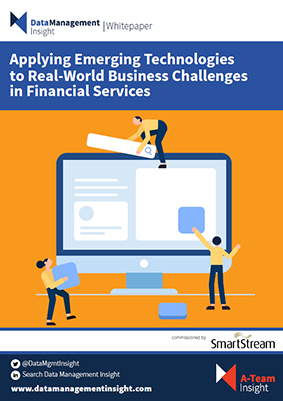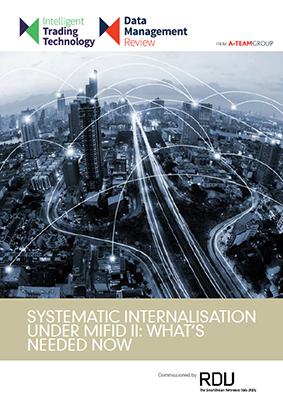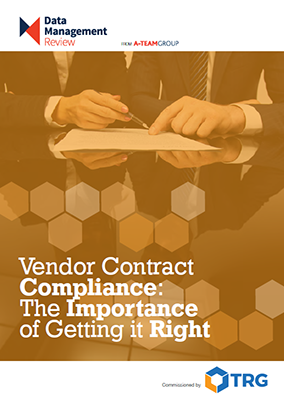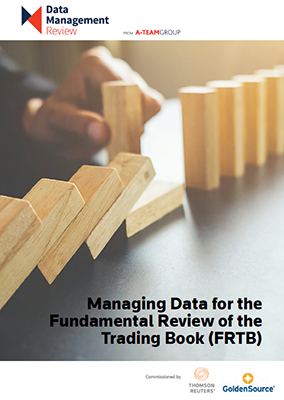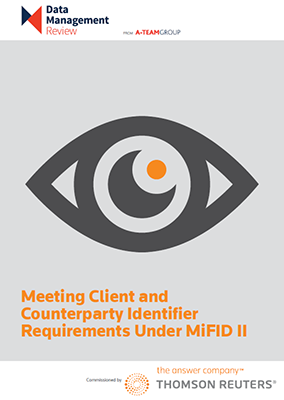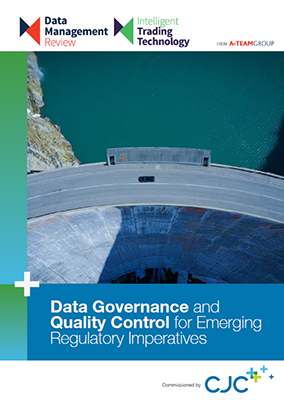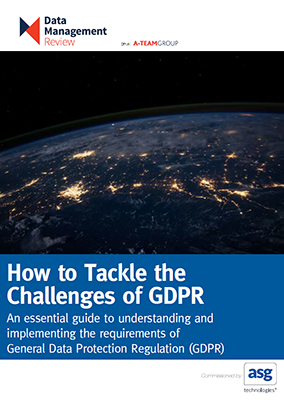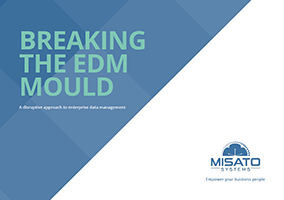Data Management Insight White Paper
Applying Emerging Technologies to Real-World Business Challenge in Financial Services
Today’s world of technology is evolving at lightning speed for financial services firms. Terms like artificial intelligence (AI), machine learning (ML) and distributed ledger technology (DLT) bandied about, technology conversations seem to be all about hype. The reality is that financial services firms need to understand the impact that these new technologies could have and...
Systematic Internalisation Under MiFID II: What’s Needed Now
From September 1, 2018, firms within the scope of MiFID II that breach volume thresholds set by ESMA on August 1, 2018 for internal matching of client orders will be required to register as systematic internalisers (SIs) and operate within the SI regime detailed in the regulation. Sounds pretty straightforward, but that is far from...
Embracing Client Behavioural Analysis for Improved Business Outcomes in Fund and Wealth Management
Emerging innovative technologies are presenting financial institutions with a unique opportunity to better understand the needs of their clients and cross-/up-sell accordingly. Tapping into new data sets and advanced data management techniques, financial institutions are starting to perform the kind of client behavioural analysis common in other industries. Retail financial institutions like fund managers are...
Vendor Contract Compliance: The Importance of Getting it Right
Understanding in-house consumption of vendor data and ensuring compliance with multiple contracts for market data and other information can be challenging, particularly for financial institutions managing large volumes of contract clauses across hundreds of suppliers. The contract compliance problem often revolves around institutions’ lack of transparency into actual data usage of information services they pay...
Managing data for the Fundamental Review of the Trading Book (FRTB)
FRTB presents banks with a number of organisational, computational and data granularity challenges. These require firms to review the structure of their trading desks, adopt revised risk models, and source extensive data including 10-plus years of time-series data. This white paper, sponsored by Thomson Reuters and GoldenSource, details the regulation’s demand for additional data, examines...
Meeting Client and Counterparty Identity Requirements Under MiFID II
The January 3, 2018 compliance deadline for Markets in Financial Instruments Directive II (MiFID II) is approaching fast, requiring firms within its scope to ensure they have access to LEIs to identify all clients, counterparties and issuers they deal with. As the industry mantra goes, and in line with MiFID II and its related Markets...
Data Governance and Quality Control for Emerging Regulatory Imperatives
Impending regulations, following recent price manipulation investigations, will require trading firms to have new data governance and quality controls in place. A new benchmarking study by CJC, in association with A-Team Group, conducted amongst professionals within major Tier 1 and Tier 2 sell side institutions, explores the data governance demands posed by new and emerging...
How to Tackle the Challenges of GDPR
Financial institutions around the world are bracing themselves for the onset of the EU’s General Data Protection Regulation (GDPR), which introduces eye-watering financial penalties for firms failing to meet stringent new rules on managing the personal data of EU residents. GDPR – which comes into effect in May 2018 – will have a major impact...
Optimising Market Data Subscriptions with Usage Monitoring
As lines of business demand access to more market data and firms seek to cut the overall cost of data services, the need to understand what market data services are being accessed and used becomes imperative to optimising data subscriptions. This is a challenge, but is made more difficult in an environment where new data...
Breaking the EDM Mould
The regulatory drive for transparency across capital markets is pushing traditional enterprise data management (EDM) solutions, such as data warehouse platforms and extract, transform and load (ETL) systems, towards breaking point. An emerging and disruptive approach to EDM is based on open source high-performance data bus technologies that are particularly good at ingesting and routing...


